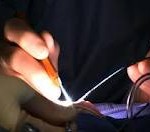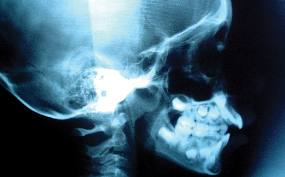A large percentage of the world’s population is diagnosed and treated for head and neck tumor. These are oral cancers, nasopharyngeal carcinoma, laryngeal cancers, and pharyngeal cancers.  It is said that head and neck tumor head and neck tumor cases are much more aggressive in the younger members of the population probably because of the late diagnosis.
Geographically speaking, head and neck tumor is most likely to be developed by those in India than those in the Scandinavian countries. Asians are most likely to have head and neck tumor because of fondness for smokeless tobacco or snuff and chewing betel nut. Nasopharyngeal carcinoma is more likely to affect northern Africa and China because of the meat and fish diet. Read on and find out more about head and neck tumor cases:
1. Risk factors
 If you are wondering if you are at risk in acquiring a head and neck tumor, then you should evaluate your lifestyle. You are at risk if you use tobacco, alcohol, or marijuana; if you are highly exposed to UV rays; and if you have viral infections all the time. When you smoke tobacco, getting laryngeal cancer is a high probability especially if you are a heavy smoker. Non-smokers can also get a head and neck tumor when they. Tobacco can be smokeless as well—snuff. This form of tobacco affects the oral cavity manifested by lesions that are premalignant (leukoplakia) which is usually situated in an area that is against the oral mucosa. These then become carcinomas of the invasive kind. Alcohol use or consumption is also a serious risk factor in acquiring a head and neck tumor. But it is less powerful than tobacco. If you are a smoker and a drinker, then you have an ever greater risk in getting head and neck tumor. Marijuana smoking is also related to developing head and neck tumor.
If you are wondering if you are at risk in acquiring a head and neck tumor, then you should evaluate your lifestyle. You are at risk if you use tobacco, alcohol, or marijuana; if you are highly exposed to UV rays; and if you have viral infections all the time. When you smoke tobacco, getting laryngeal cancer is a high probability especially if you are a heavy smoker. Non-smokers can also get a head and neck tumor when they. Tobacco can be smokeless as well—snuff. This form of tobacco affects the oral cavity manifested by lesions that are premalignant (leukoplakia) which is usually situated in an area that is against the oral mucosa. These then become carcinomas of the invasive kind. Alcohol use or consumption is also a serious risk factor in acquiring a head and neck tumor. But it is less powerful than tobacco. If you are a smoker and a drinker, then you have an ever greater risk in getting head and neck tumor. Marijuana smoking is also related to developing head and neck tumor.
2. Signs and symptoms
 You know that you have a head and neck tumor when you have difficulty in swallowing, speaking, breathing, and hearing. Upon questioning you should be asked about odynophagia, dysphagia, hoarseness, globus sensation, change in forming words, epiphora, epistaxis, otalgia, trismus, and ear stuffiness. Â A very detailed should be filled out if you are to really determine that you have a head and neck tumor.
You know that you have a head and neck tumor when you have difficulty in swallowing, speaking, breathing, and hearing. Upon questioning you should be asked about odynophagia, dysphagia, hoarseness, globus sensation, change in forming words, epiphora, epistaxis, otalgia, trismus, and ear stuffiness. Â A very detailed should be filled out if you are to really determine that you have a head and neck tumor.
3. Diagnosis
If you want to be accurately and correctly diagnosed of a head and neck tumor, you should go to a highly-knowledgeable specialist of the head and neck. When you are diagnosed early, you have a lesser chance of dying from the disease. Tissue and drainage samples are collected and brought to the laboratory for further analysis.Laryngoscopy, endoscopy, palpation of the thyroid, lab examinations, diagnostic imaging (X-rays, MRI, CT-scan), nuclear scans, biopsies, and angiographies should be performed to yield accurate diagnosis.
4. Physical examination
This is the most ideal means of detecting head and neck tumor in the aerodigestive tract. The first assessment will determine the tumor’s severity. This should be done very carefully because of the increasing incidence of multiple primary tumors in the aerodigestive tract. The physical examination should be dome in a very systematic manner. The scalp or skin will be checked for suspicious ulcers, lesions, pigmentation, or nodules. Then an evaluation of the cranial nerve will be performed. This can be done by testing facial sensation, eye motion, hearing, gag reflex, abduction of the shoulder, protrusion of the tongue, and mobility of the vocal cord.
5. Treatment
 When you are diagnosed with head and neck tumor, radiation therapy, surgery, chemotherapy, or a combination of these can be used to eradicate it. There could also be drugs like Cisplatin, Fluorouracil, Carboplatin, and Paclitaxel could be given to combat the tumors. In adjuvant chemotherapy/radiation therapy could be performed after the surgery so that the minute particles could be eradicated and to reduce the possibility of metastasis.
When you are diagnosed with head and neck tumor, radiation therapy, surgery, chemotherapy, or a combination of these can be used to eradicate it. There could also be drugs like Cisplatin, Fluorouracil, Carboplatin, and Paclitaxel could be given to combat the tumors. In adjuvant chemotherapy/radiation therapy could be performed after the surgery so that the minute particles could be eradicated and to reduce the possibility of metastasis.
6. Therapies
 If there are small indications of head and neck tumor spotted in your system, you could undergo photodynamic therapy, which is also effective for mucosal dysplasia. Another process is chemoprevention that uses retinoids (from vitamin A) to prevent head and neck tumor development. As you know, all patients suffering from head and neck tumor lose a significant amount of weight. In the light of this, they undergo diet therapies to help them regain strength and nutrients that they have lost.
If there are small indications of head and neck tumor spotted in your system, you could undergo photodynamic therapy, which is also effective for mucosal dysplasia. Another process is chemoprevention that uses retinoids (from vitamin A) to prevent head and neck tumor development. As you know, all patients suffering from head and neck tumor lose a significant amount of weight. In the light of this, they undergo diet therapies to help them regain strength and nutrients that they have lost.
Maybe you are suspicious about a set of signs or symptoms that might indicate a head and neck tumor. Be open with your doctor about it and make sure that you are fully oriented about what you have. If it is a head and neck tumor, ask for a second opinion. This will fully confirm the disease and would arm you with the knowledge in what to do.
